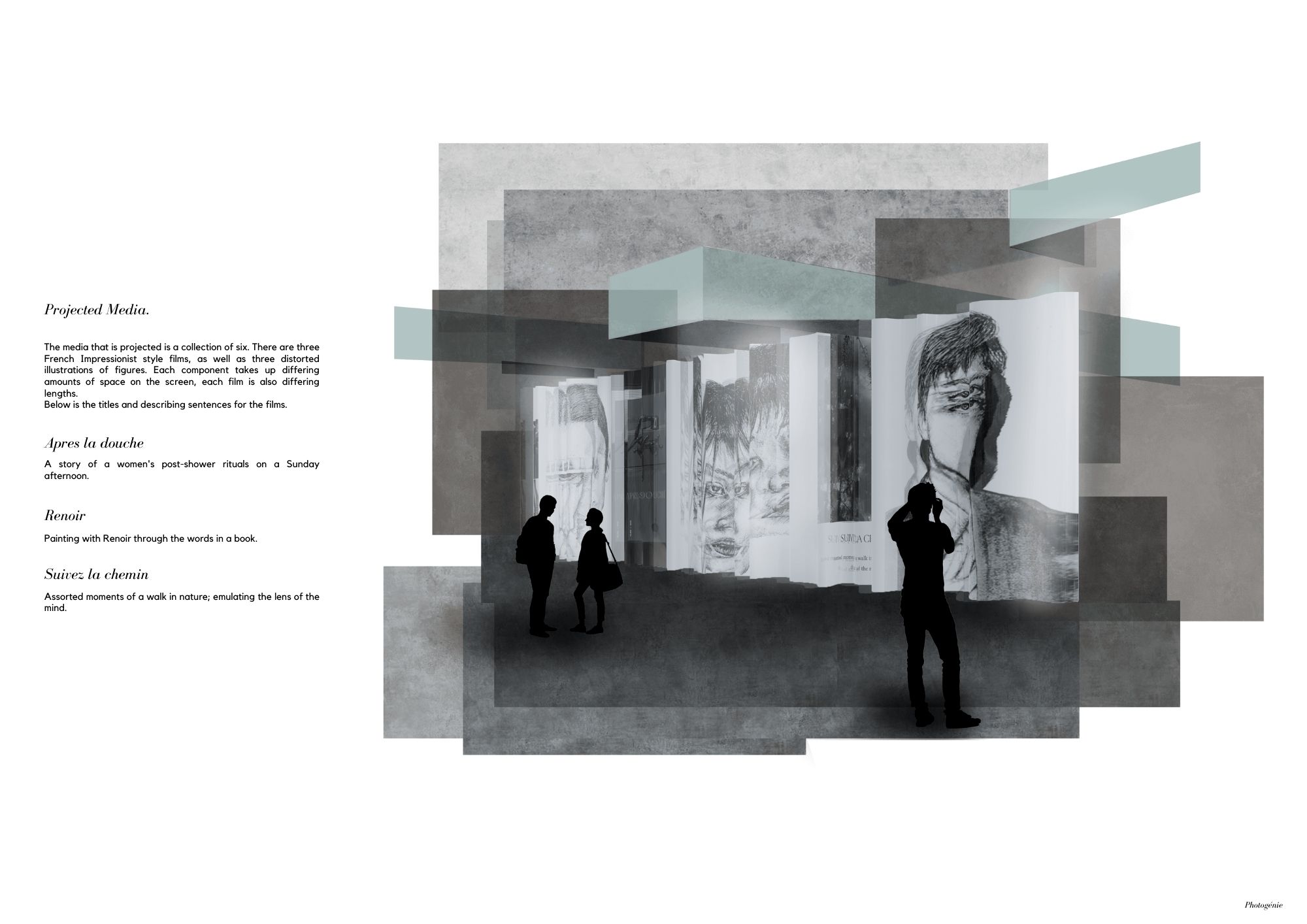

• the juncture when cinema becomes art •
My project is entitled Photogénie located within Imperial Lane, Auckland.
The brief ‘URBAN ITINERARY: CINEMATIC SPACE’ tasked us with creating a space that is informed by filmmaking, cinematic space, and visual/spatial narratives. In our process work, we were to create a cinematic lens based upon a film technique, I chose the technique of distortion. Through research into distortion, I found the film era of 1920’s French Impressionism and with this the film theory of Photogénie.
Taking inspiration from Photogénie I have created a temporary, public art and film installation based on the relationship between existence, the spectator, and the lens. Photogénie focuses on the elements of reality, that’s sublime tenderness cannot be captured through film, in other words – the juncture when cinema becomes art.
My project explored ways to rejuvenate French Impressionist cinema and pay homage to Auckland’s film history.
My aim for Photogénie was to create an installation that provides a cinematic escape from the CBD, offering a place to explore for those interested in film, history, culture, and art.
Impressionist Film: A Short Essay.
Soon after WW1, local French directors, writers, and theorists became increasingly concerned with the massive influx of American Cinema being shown in France. Collectively, these creatives began to think of ways to introduce a new form of film, rejecting Hollywood in an undeniably French way.
Directors such as Abel Gance, Jean Epstein, Germaine Dulac, Marcel L'Herbuer, Louis Delluc, and Jean Renoir tried to understand cinema as an art form, and through this became pioneers in Film Theory at that time.
The impressionist directors completely changed the approach to cinema. Alongside their painter counterparts, Impressionist directors prioritised imagery with an emphasis on beauty and aesthetics. Through the use of this revolutionary style of visual composition, they were able to introduce the exploration of internal feeling into film. Camera and editing techniques, that had not been seen before graced the stage allowing the intangible aspects of dreams, thought, emotion, and the psyche to shine through in Impressionist Film. Techniques like distortion, camera motion, superimposition, kaleidoscopic imagery, non-linear editing, close-ups, film tinting among others conveyed a new theory that film could capture an emotional, genuine depth of reality. This may seem like a well-known, comment element of film in the modern-day, but the authenticity we experience on-screen today is solely thanks to the impressionists.
While Impressionists directors were finding their independent style, they were also posing the question 'is film art?'. From this question, the term 'Photogénie' was coined. My interpretation of Photogénie is that it is the transcendent aspects of film that transform it into art. Infamously hard to define, Photogénie is something personal; an individual experience and highly subjective. The Impressionists themselves found it remarkably hard to agree on what creates Photogénie.
There are numerous essays trying to dissect the intangible quality that is Photogénie. In Peter Verstraren's analysis of Abel Gance's Napoléon, he states "For those filmmakers who adhere to the concept of Photogénie, the 'essence' of things resides in what exceeds the human eye and never in an objective rendering of things. Photogénie refers to the potential of moving images to express a realm beyond appearance and immediate sense experiences."(Verstraren, 2012).
Is it possible Photogénie captures an element of reality, that's sublime tenderness can only be seen through film?
Photogénie can manifest itself through any element, sound, light, expression, or a lack of all these things. It is a relationship between existence, the spectator, and the lens, perhaps this is the juncture when cinema becomes art.


